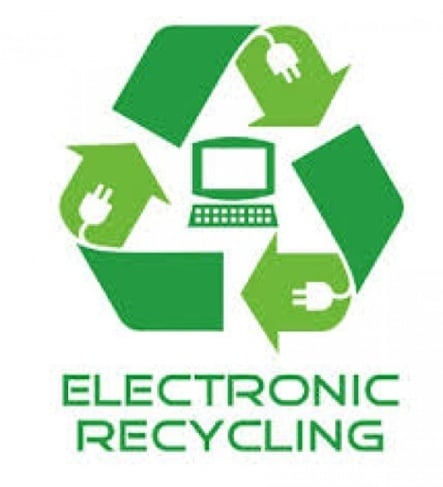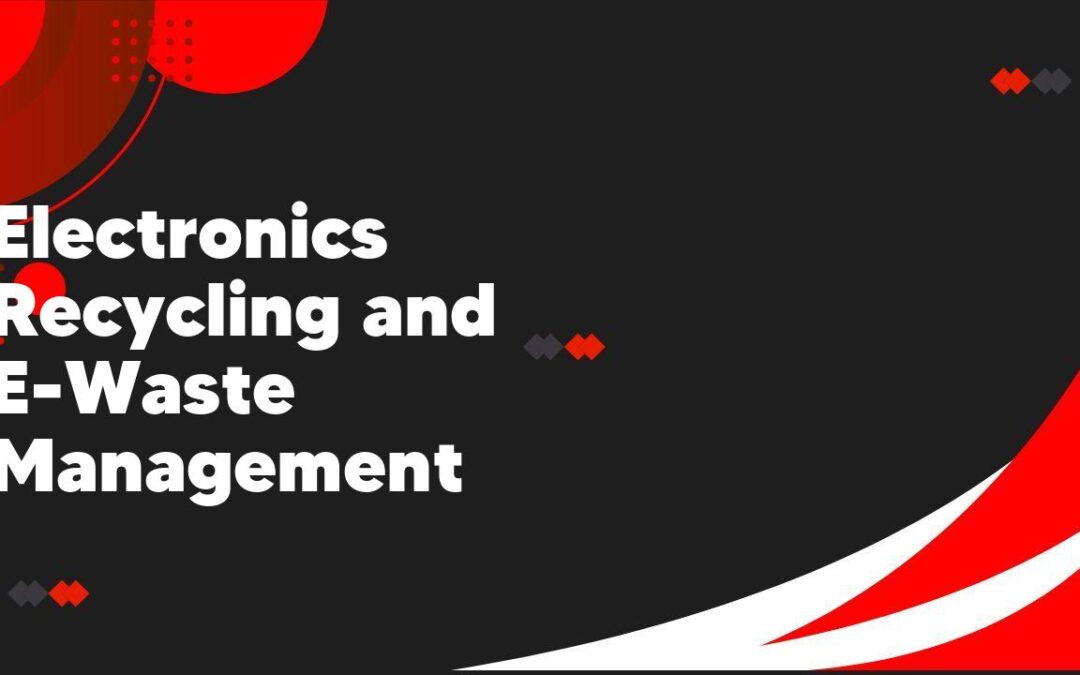Electronics recycling and e-waste management are becoming increasingly crucial as technology continues to advance at a rapid pace. With the constant introduction of new electronic devices, the need for proper disposal and recycling of outdated and broken electronics is essential to prevent environmental harm. This article will delve into the importance of electronics recycling and e-waste management, as well as the various methods and strategies employed to ensure responsible and sustainable practices.
1. The growing problem of e-waste: Understanding the need for proper electronics recycling
As a concerned citizen, I am becoming increasingly aware of the growing problem of e-waste. Electronic waste, or e-waste, refers to the discarded electrical or electronic devices that are no longer in use. With the rapid advancement of technology and the continual upgrade of electronic devices, the rate of e-waste generation has reached alarming levels. It is crucial for all of us to understand the need for proper electronics recycling. When electronics are not disposed of properly, they end up in landfills, posing serious environmental and health hazards. Therefore, it is necessary to raise awareness and promote the importance of responsibly recycling electronic devices to mitigate the adverse impacts of e-waste.
2. Consequences of improper e-waste disposal: Environmental and health risks

Improper disposal of electronic waste has severe consequences on both the environment and our health. When e-waste is not handled correctly, harmful chemicals like lead, mercury, and cadmium can contaminate the soil and water bodies, posing a significant risk to the ecosystem. These toxic substances can leach into the ground, polluting drinking water sources, and causing irreversible damage to aquatic life. Furthermore, when e-waste is incinerated, it releases harmful gases into the atmosphere, contributing to air pollution and climate change. In addition to environmental risks, improper e-waste disposal also poses serious health hazards to humans. Direct exposure to the hazardous materials found in electronic waste can result in respiratory problems, neurological disorders, and even cancer. It is crucial that we address this issue and adopt proper recycling and disposal methods to safeguard both the environment and our well-being.
3. The importance of responsible electronics recycling: How it benefits society and the environment
As a responsible citizen, I firmly believe in the importance of responsible electronics recycling. Not only does it benefit society, but it also plays a crucial role in preserving the environment. Electronic waste, or e-waste, can be harmful when improperly disposed of, releasing toxic substances into the air, soil, and water. By recycling our electronics, we can prevent these harmful materials from seeping into our surroundings and polluting our ecosystem. Additionally, responsible electronics recycling allows for the recovery of valuable resources and precious metals, reducing the need for new raw materials and minimizing the carbon footprint associated with mining and manufacturing. By embracing responsible electronics recycling, we can contribute to a healthier planet for future generations.
4. Understanding the e-waste recycling process: Steps and methods for effective management
Understanding the e-waste recycling process is vital in order to effectively manage this growing environmental concern. As a responsible citizen, I have taken the initiative to educate myself on the steps and methods involved in e-waste recycling. The process begins with the collection of electronic devices, either through drop-off points or e-waste collection drives. Once collected, the devices are sorted and categorized based on their material composition. This step helps in determining the recycling methods that need to be employed. After sorting, the devices undergo dismantling, where components are separated and assessed for reuse or recycling. Finally, the recyclable materials are processed to extract valuable resources, while the hazardous components are disposed of properly. By understanding these steps, I can contribute to the effective management of e-waste and play my part in promoting a sustainable future.
5. Addressing the challenges of e-waste management: Solutions for sustainable recycling practices
As a female working in the field of e-waste management, I am keenly aware of the challenges that this industry faces. E-waste has become a global problem, with millions of tons of electronic waste being generated every year. One of the biggest challenges is the proper disposal and recycling of e-waste. Many people still do not know how to dispose of their electronic devices responsibly, leading to harmful environmental consequences. As such, one solution that I believe in is the promotion of sustainable recycling practices. This includes educating the public on the importance of recycling and providing convenient options for e-waste collection and recycling. Additionally, encouraging manufacturers to design products with recycling in mind can help create a more sustainable cycle. By addressing these challenges head-on, we can work towards a future with more sustainable e-waste management practices.
6. Taking action: How individuals and businesses can contribute to electronics recycling efforts
As an individual, I believe that it is essential to take action and contribute to electronics recycling efforts. There are several ways in which we can do this. Firstly, we can ensure that we responsibly dispose of our electronics by taking them to recycling centers or participating in e-waste collection events. Additionally, we can educate ourselves and others about the importance of recycling electronics and the environmental impact of improper disposal. Businesses can also play a crucial role in electronics recycling by implementing recycling programs within their organizations and encouraging their employees to participate. By taking these steps, we can all contribute to a more sustainable future and reduce the harmful effects of electronic waste on our planet.
Conclusion
In conclusion, electronics recycling and e-waste management are crucial for minimizing the environmental and health hazards caused by electronic waste. By properly disposing of e-waste, we can reduce the accumulation of toxic chemicals in landfills and the release of harmful gases through incineration. Additionally, promoting the recycling and reuse of electronic devices can help conserve valuable resources and reduce the strain on mining and manufacturing industries.
Q: What is electronics recycling?
A: Electronics recycling is the process of recovering valuable materials from old or unwanted electronic devices for reuse or disposal.
Q: Why is electronics recycling important?
A: Electronics recycling is crucial to reduce the environmental impact of e-waste and prevent hazardous materials from entering landfills.
Q: What types of electronics can be recycled?
A: Almost all electronic devices, including computers, smartphones, televisions, printers, and batteries, can be recycled.
Q: How can I recycle my old electronic devices?
A: You can recycle your old electronic devices by bringing them to a designated e-waste recycling facility or participating in electronic recycling events.
Q: What happens to my electronics after recycling?
A: After recycling, the electronic devices are disassembled, and valuable materials like metals, plastics, and glass are extracted for reuse in manufacturing new products.
Q: Can’t I just throw my old electronics in the trash?
A: No, disposing of electronics in regular trash is harmful to the environment as they contain toxic substances like lead, mercury, and cadmium. It is important to recycle them responsibly.

